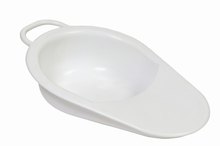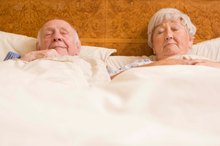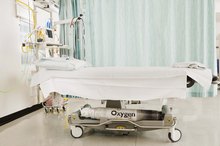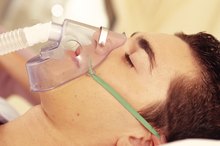Types of Hospital Beds
There are many different types of beds used in a hospital. The ones you see when visiting someone at the hospital are not the only ones used throughout the facility. Different types of beds are used for different types of situations and patients’ conditions and they serve different purposes of treatments.
Gatch Bed
The gatch bed has long-standing history of use in hospitals. They are more often seen in nursing homes and older and/or remote areas that are economically-challenged that utilize these beds because of their lack of need for electricity. They have three cranks at the foot of the bed below the mattress. One crank raises and lowers the whole bed, one crank raises and lowers the head of the bed and the last crank raises and lowers the foot of the bed.
- The gatch bed has long-standing history of use in hospitals.
- They have three cranks at the foot of the bed below the mattress.
Electric Bed
How to Lift a Fallen Patient
Learn More
The basic modern hospital bed is called an electric bed. They are the beds most often seen in city hospitals or major town hospitals. The options of raising and lowering the bed are chosen through buttons that are set on the side rails. The patients themselves are able to set the position of their beds as opposed to the nurses or Certified Nursing Assistants (CNA's) setting the position manually.
- The basic modern hospital bed is called an electric bed.
- They are the beds most often seen in city hospitals or major town hospitals.
Stretchers
The types of beds you see in a hospital emergency room unit are typically stretchers. These beds are designed for mobility. In the event a person must dial 911 from a separate location, these beds can easily transfer from house to ambulance to the operating room to the ER unit, thanks to special features, such as folding legs.
Low Beds
The Best CPAP BiPAP Masks for High Pressure
Learn More
Low beds are specifically designed for those patients who are liable to fall off beds and cause injury, despite the restraint of the side rails. Low beds are set from about 8 inches to less than two feet off the ground at the highest setting. Some designs of the bed have a high/low maneuvering setting, but most beds are just low to the ground with just the option to raise or lower the head and foot of the bed.
- Low beds are specifically designed for those patients who are liable to fall off beds and cause injury, despite the restraint of the side rails.
- Some designs of the bed have a high/low maneuvering setting, but most beds are just low to the ground with just the option to raise or lower the head and foot of the bed.
Low Air Loss Beds
A low air loss bed is a type of bed which has special cushions and a system designed to blow air into sacs within the mattress 1. These beds are designed for burn patients and patients with skin grafts by keeping them cool and dry, for patients prone to pressure ulcers and patients with circulatory and/or skin problems by reducing pressure on the skin.
Circo-electric Beds
A circo-electric bed enables the bed to rotate inside circular bars that look like a giant hamster treadmill. These beds used for patients in traction, severe skin conditions, patients who have severe burns or for patients who spinal injuries that cannot be moved but must be turned every two hours according to standard hospital policy.
Clinitron Beds
A Clinitron bed is similar to both the low air loss bed and the circo-electric bed in that it is designed for patients with pressure ulcers, flaps, grafts, burns or skin disorders 1. It reduces pressure on the patient’s skin because it is filled with material that resembles sand. Dry, warm air circulates through the material to maintain a level temperature and to support the body’s weight evenly.
Related Articles
References
Writer Bio
During 17 years, Janin Santa won a scholarship for writing a science fiction short story and illustrated and published her own children's book, "Different Animals." She has CMA training, CNA training and graphic arts skills. She is working on a second children's book, "Dancing Pictures."








